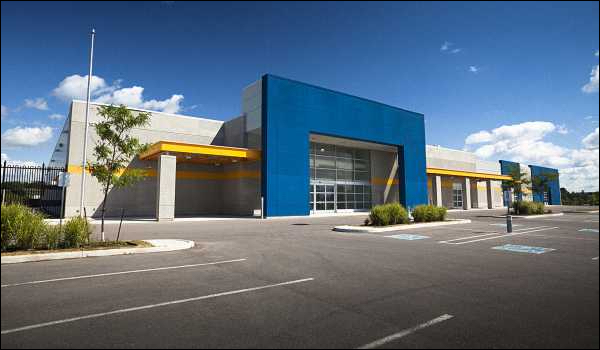
“This article by BMT Tax Depreciation is important
– because it simply confirms what I’ve conveyed in
a number of previous articles.” Chris Lang
MANY INVESTORS tend to stay within their comfort zone when it comes to investing in property. And typically, this means they merely purchase residential houses and apartments.
However, investing in commercial property has become more popular in recent times as investors look to diversify their portfolio and seek out affordable alternatives in a tightening residential market.
Unlike residential property, vacancy rates for commercial property are low and this combined with higher returns and depreciation benefits means there are several reasons to consider commercial properties as a potential investment.
We’ve taken a look at some reasons why commercial property is worth adding to your property portfolio.
Higher Rental Returns
Commercial property typically offers higher rental yields than residential investments.
According to realcommercial.com.au, commercial properties offer net rental yields between 5% and 8%. And according to CoreLogic, this is much higher than residential properties which have an average gross rental yield of 4.1%.
This means a commercial investment is more likely to provide you with a positive cash flow.
Rents Increase Annually
Most commercial leases have fixed rental rate increases written into the agreement. Annual increases of between 3% and 4% are common practice, much higher than the current level of rental increase for residential leases.
Longer Lease Opportunities
Commercial leases are generally longer than residential properties, ranging anywhere between twelve months to ten years depending on the industry and property type.
By comparison, residential tenants are unlikely to sign a lease for longer than a year, with no guarantee of renewal after that period.
Commercial tenants are also more likely to invest in a property by installing fit-out. If a tenant does invest capital in a premise, it’s likely they see their business operating within the property in the long-term.
Fewer Ongoing Expenses
Some of the outgoing expenses involved in holding a commercial property include council and water rates, insurance, body corporate fees and any repairs and maintenance to the building. Often some of these costs are covered by tenants and as such, landlords have fewer ongoing costs.
Diversify your Property Portfolio
Commercial real estate encompasses a broad range of property types and therefore caters to a variety of budgets and investor needs.
While retail outlets, petrol stations and large office complexes often sell for tens of millions of dollars … other commercial sites can be purchased for far cheaper. For example, investing in an inner-city car space can sell for less than $100,000.
With such variety, commercial real estate is the perfect way for investors to diversify their property portfolio.
Expanding your investment portfolio can reduce the economic risks involved and establish a financial buffer. It can also help strike a healthy balance between cash flow and capital growth.
Depreciation Deductions are Lucrative
As a building and its assets age, they depreciate in value. The Australian Taxation Office (ATO) legislation allows owners of income-producing properties to claim deductions for this wear and tear.
Commercial property owners can claim depreciation under two different categories – capital works (division 43) and plant and equipment (division 40).
Capital works deductions are available for the building’s structure and any permanently fixed assets such as bricks, mortar and windows. For most commercial buildings these deductions can only be claimed if the property commenced construction after the 20th of July 1982.
Plant and equipment assets are items that can be easily removed from the property such as hot water systems, air conditioners, exhaust fans and security systems. Depreciation deductions for these assets are calculated based on the individual effective life of each item as set by the ATO and can be claimed by both owners and tenants.
Owners are eligible to claim deductions for any plant and equipment assets they own. In certain instances, owners can also claim any assets left behind by previous tenants.
Tenants can claim depreciation on any fit-out they add from the starting date of their lease. If a tenant removes items at the end of their tenancy, they may also be able to claim any remaining depreciation for assets that are removed and scrapped when they vacate the premise.
Immediate write-off and low-value pooling rules may also apply if an asset is below a certain value, particularly for small and medium-sized business owners. As plant and equipment items are rarely the same age as the property and are often replaced and updated, there can be significant deductions available.
It’s important to note that fit-out installed by tenants can also be structural in nature; and can therefore, be claimed as capital works deductions. Given that both the owner and tenant can claim property depreciation simultaneously and there are specific rules and regulation, it’s also best to seek expert advice when lodging a claim.
Expert advice will Improve your Cash Flow
To maximise depreciation deductions for a commercial property, it’s important to speak with a specialist quantity surveyor. These experts are recognised under Tax Ruling 97/25 as one of the few professionals with the appropriate qualifications necessary to estimate construction costs for depreciation purposes.
A quantity surveyor will inspect the property to make sure every deduction is claimed correctly. And Tax depreciation schedules make the process easy and enable you to claim the maximum deductions possible.
Bottom Line: A BMT Tax Deprecation Schedule outlines all available deductions over the forty-year life of your property and charges a one-off fee. And this fee is 100% deductible.













Speak Your Mind